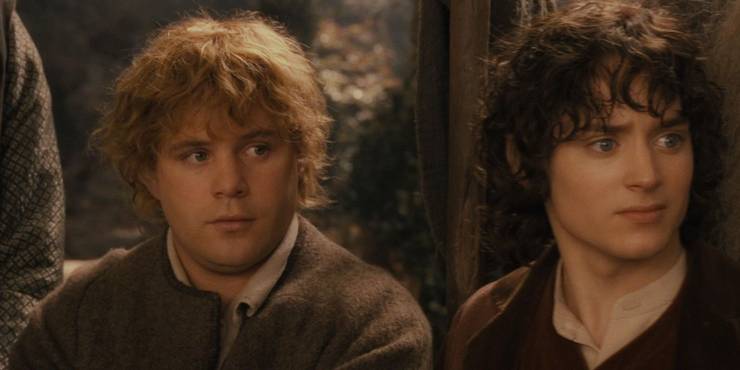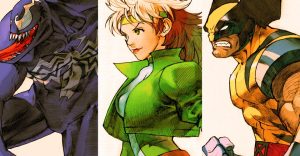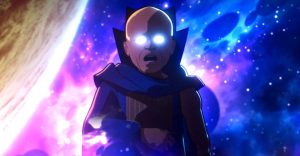Lord Of The Rings: 5 Ways The Extended Versions Are Best (& 5 Ways The Theatrical Versions Are Better)

When it comes to The Lord of the Rings, most die-hard fans would agree that the extended editions are the way to go. They add a lot of rich detail and expand Tolkien’s magnificent world, and they further prove Peter Jackson’s prowess as a director. But at the same time, these are significantly longer, and not the versions that were released to theaters, and that speaks to how the public – and Jackson, to an extent – perceive them.
Like all things, the extended editions have their pros and cons. In many cases, they are better than the theatrical versions. But in some ways, it’s best to stick to the originals.
10 Extended: Added Lore

The extended editions are for Tolkien aficionados and those who really want to spend as much time in Middle Earth as possible. The theatrical versions wish to tell a story, and to tell a good, engaging story, sometimes directors and screenwriters have to cut material that casual viewers wouldn’t care about.
As such, the theatrical versions cut a lot of great material regarding the history and lore of Middle Earth and its characters. For example, theatrical viewers would have no idea that Aragorn is actually 87 years old and a descendant of an ancient race known as the Dúnedain. Thankfully, the extended editions have resurrected these scenes for die-hard fans, and the results are a much richer, deeper understanding of the fictional world.
9 Theatrical: Much Better Pacing

Pacing is integral to a movie’s success. There’s a reason that directors and editors cut a lot of scenes from the finished film, and that’s because the finished movie works much better without the additional scenes. Many DVDs come equipped with deleted scenes, and these often run in excesses of 15, 20, even 30 minutes’ worth of cut material.
The extended editions of LOTR is what would happen if these deleted scenes were restored and placed back in the film for home video. They make for nice supplementary material, and they expand the world and characters, but they completely destroy the delicate pacing of the films and results in a jagged, sloppy experience. Deleted scenes are usually deleted for a reason.
8 Extended: They’re Longer

Of course, die hard fans are die hard fans for a reason – they love the setting, they love the characters, and they love spending time inside a fictional world. And if someone is a die hard fan of Lord of the Rings, it’s only natural that they would wish to spend their time within the extended editions.
These versions nearly total 700 minutes, or just under 12 hours. That’s a lot of time to spend inside a fantasy world, especially one as rich and expansive as The Lord of the Rings.
7 Theatrical: Better Storytelling

There’s more to storytelling than simply throwing everything at the screen. There are a number of factors to consider, including pacing, characterization, and tone. For casual and first-time viewers, it’s clear that the theatrical versions would make for a better and more engaging viewing experience.
The story is told in a far more fluid and compact manner without veering into gluttony and excessive (maybe even unnecessary) world building. The extended versions obviously work better for experienced, die-hard Tolkien aficionados, but the storytelling often veers into overindulgence.
6 Extended: More Time With The Characters

The characters of The Lord of the Rings are endlessly enjoyable, richly complex, and highly entertaining. Stories live and die on their characters, and the characters of LOTR have helped distinguish the series from its many lesser contemporaries, spiritual successors, and knockoffs. So why not spend more time with them?
Do audiences really need to watch Merry and Pippin drinking magic water and growing several inches? No, but it allows fans to spend five more minutes with the entertaining duo, and for many, that’s a good enough reason to include it.
5 Theatrical: The Director’s Vision

Extended defenders may hate to hear it, but the theatrical versions are the definitive forms of the films. Jackson told IGN, “The theatrical versions are the definitive versions” and that “the extended cuts [are] a novelty for the fans that really want to see the extra material.”
The extended editions have always been for the mega fans who want to spend more time in Middle Earth; they are not meant to be the de-facto “greatest versions” of the films. Longer doesn’t mean better.
4 Extended: Closer To The Novels

The Lord of the Rings novels have been extraordinarily popular for decades, and even when The Fellowship of the Ring was released in 2001, it was forced to meet the inflated expectations of millions.
Tolkien’s world has often been regarded as one of the greatest and richest in modern fantasy literature, and the novels have an enormous fanbase that wish to see the films do their beloved story justice. In that regard, the extended editions are definitely the preferred version, as they include material from the novels that is absent from the cleaner, more straightforward theatrical versions. For example, the entire Mouth of Sauron sequence can only be found in the extended edition of The Return of the King, satisfying the series’ fans who were left disappointed with its absence. However, the film trilogy also took a few creative liberties with the source material, including Saruman’s death at Isengard and the complete elimination of the Scouring of the Shire.
3 Theatrical: They’re Shorter (Obviously)

While The Return of the King is one of the best movies to run over four hours in length, it comes at the expense of pacing and viewers’ time. The extended versions run nearly 12 hours in length, and not everyone has that sort of free time.
A trilogy of that length requires some serious dedication, and while the films make for a fantastic viewing experience, many people may wish for the abridged version. The theatrical versions, by comparison, run a little over 9 hours. Still a good chunk of time, but that extra 3 hours may prove too daunting for more casual viewers.
2 Extended: Further Depth To Characters

If there’s one thing that the extended versions really excel at, it’s providing further depth to the characters. For example, Faramir is given much greater importance in the extended versions, turning from a Boromir-lite figure that is brushed aside by the quick-moving story into a tragic hero with an absorbing back story.
This entire back story is removed from the theatrical versions, leaving viewers a little lost in regards to Faramir’s motivations and his personal history with both the ring and his father. The further care that is given to the story’s characters is one of the primary benefits of viewing the extended editions.
1 Theatrical: Needless Scenes Have Been Cut

While the extended editions are great, there’s no denying that they contain some needless scenes that have no reason for being in the movie. They butcher the pacing, they provide nothing in terms of character or plot development, and they may leave some casual viewers reaching for the fast forward button.
These include Merry and Pippin drinking magic water, Sam and Frodo using the elven rope while talking about Shire salt, and Merry and Pippin find Isengard’s food stash. All fun enough scenes, but absolutely unnecessary in regards to the series’ wider scope.
About The Author

















